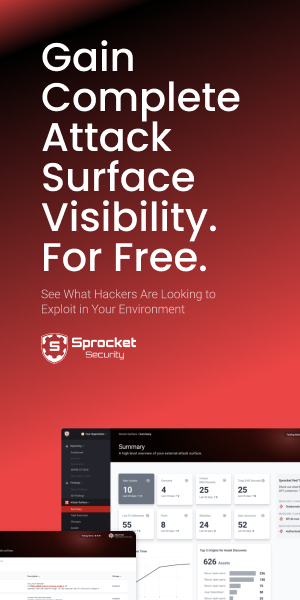Attack surface management (ASM) is a cybersecurity solution that continuously monitors and assesses an organization’s internet-connected assets. The goal of ASM is to establish a detailed picture of a company’s IT assets, both digital and physical, to quickly and accurately detect weaknesses and vulnerabilities. ASM provides unique value to businesses because it’s performed from the perspective of a cyber attacker. This means ASM goes above and beyond basic IT hygiene solutions by covering not just known assets but also unknown and rogue assets. A comprehensive ASM program can save an organization time, money, and reputational damage by minimizing cyber attacks and data breaches.
What is an Attack Surface?
The term might be new, but you’re already familiar with your organization’s attack surface. The attack surface is made up of technology assets that connect to the internet to access, process, and store company data. This can include hardware, software, cloud assets, and SaaS. Here’s a more in-depth look at what your attack surface includes:
- Digital attack surface: Your digital attack surface is composed of any assets accessible via the internet. This includes known assets (your website and servers), unknown assets (old websites and defunct landing pages), and rogue assets (malicious infrastructure like malware or spoofed versions of your website).
- Physical attack surface: Your physical attack surface is made up of any devices a bad actor can gain physical access to. These include computers, hard drives, mobile phones, and USB drives. Attackers can access your physical assets via malicious means like break-ins or careless employees. Passwords written on sticky notes and company devices forgotten in cafes are classic physical attack vectors.
- Social engineering attack surface: This attack surface covers anyone at your organization who may be susceptible to a social engineering attack. This includes anyone from interns and temps all the way up to the CEO.
Steps Involved in Attack Surface Management
Step 1: Inventory assets and systems
Attack surface management begins with identifying and mapping your organization’s digital assets. This applies to internal and external attack surfaces and extends to unknown or rogue assets. Modern attack surface management solutions often mimic the tools used by actual attackers in order to accurately identify potential attack vectors.
Step 2: Context
It’s important to provide some context to IT assets since each carries a different risk. Attack surface management analyzes each asset to determine its exposure level and threat risk. Factors considered may include the asset’s usage, IP address, network connection points, and ownership.
Step 3: Prioritization
Once we understand the risk level of each asset, we’ll rank them based on priority. This lets you tackle the most dangerous vulnerabilities during the remediation phase. Risk scoring is based on various factors, including the asset’s visibility, its potential for exploitation, and whether or not it’s been exploited in the past. The score also factors in how complex the vulnerability is to fix. It’s important to note that attack surface management scoring is based on objective criteria, unlike pen testing and red teaming, which is more subjective in nature. This makes the results of attack surface management easy to interpret, prioritize, and take action on.
Step 4: Continuous Testing
With continuous testing, you can keep an eye on any vulnerabilities or threats that arise within your ever-changing attack surface. Each day, new users are added, and new devices are connected to your organization’s network, creating new opportunities for potential attacks. An attack surface management solution provides 24/7 coverage and can catch new risks and security gaps as they arise.
Step 5: Remediation
With the data gathered from the first four phases, your IT team should be able to identify, prioritize, and remediate security risks.
Benefits of Attack Surface Management
Conducting attack surface management yields a variety of valuable benefits for your organization.
Reduction of security risks and vulnerabilities
Organizations often try to improve their cybersecurity by reducing their attack surface. This approach may include limiting user access and reducing the number of internet-connected devices. However, this can leave unknown exploits or vulnerabilities open to attack. Attack surface management tools offer real-time monitoring, analysis, and remediation across all of your organization’s digital assets.
Improved security posture
ASM also improves how well your internal team is able to detect and respond to threats. Having an up-to-date picture of your organization’s attack surface can expedite the process of identifying, blocking, and remediating attacks.
Compliance with industry regulations and standards
Some industries, like the payment card processing industry and healthcare industries, require strict adherence to data security and privacy regulations. Routine ASM will help your organization stay in good standing with industry-specific laws, regulations, and standards.
Cost savings from proactive risk management
Continuous threat monitoring can reduce the overall impact of cyber attacks. According to the IBM report Cost of a Data Breach 2021 (page taken down https://www.ibm.com/downloads/cas/OJDVQGRY), automated security solutions can save companies up to $3.81 million if a breach does occur.
Challenges of Conducting Attack Surface Management
Attack surface management can be a challenging undertaking for organizations of all sizes. Here are some of the stumbling blocks associated with this type of security solution:
Gathering accurate and complete information
Organizations face increasingly complex attack surfaces with the rise of cloud technology, IoT, and work-from-home employment. This increase in complexity can make it difficult for organizations to define their overall attack surface. For example, some organizations may not include cloud resources or SaaS applications in their inventory despite being potential attack vectors. Attack surface management can accurately map your organization’s assets, from known to unknown assets and even rogue elements.
Balancing security needs with business needs
Keeping up with a dedicated ASM program requires consistency, structure, and time commitment. Many organizations find this challenging, especially smaller companies with limited resources. Additionally, organizations may struggle to align their ASM programs with other cybersecurity and IT activities. For example, an organization may want to prioritize speed when rolling out a new software feature, but expediting this process can lead to undiscovered vulnerabilities. ASM provides an additional layer of detection and security across your company.
Keeping up with evolving threats and vulnerabilities
The cybersecurity threat landscape is constantly evolving, with new threats emerging almost daily. The latest exploit might blindside organizations that rely on outdated or manual ASM solutions. This is often an issue with in-house ASM programs where the budget is limited or staffing is small. Luckily, cybersecurity companies leverage the latest ASM solutions to identify old, obsolete technology before an attacker gets their hands on it.
Implementing Recommendations from Attack Surface Management
Uncovering vulnerabilities in your IT system is just the first step in shoring up your cyber defenses. Next, you’ll have to put your team’s recommendations into action. The remediation process begins with prioritizing which vulnerabilities to tackle first. As a rule of thumb, starting with the most high-risk issues is best since they’re likely to cause the most damage. Your attack surface management vendor can help you determine which issues require the most urgent attention and provide suggestions on how to remediate any flaws in your defenses.
Continuous cybersecurity monitoring with attack surface management
The majority of data breaches aren’t the result of highly sophisticated attacks but basic cyber security lapses. Attack surface management will help you better understand your organization’s security gaps and threat exposure. From there, your team can implement strategic solutions to keep sensitive data protected from attackers. And if your company does face a cyber attack, you’ll be in a better position to quickly identify the attack and stop it in its tracks.



